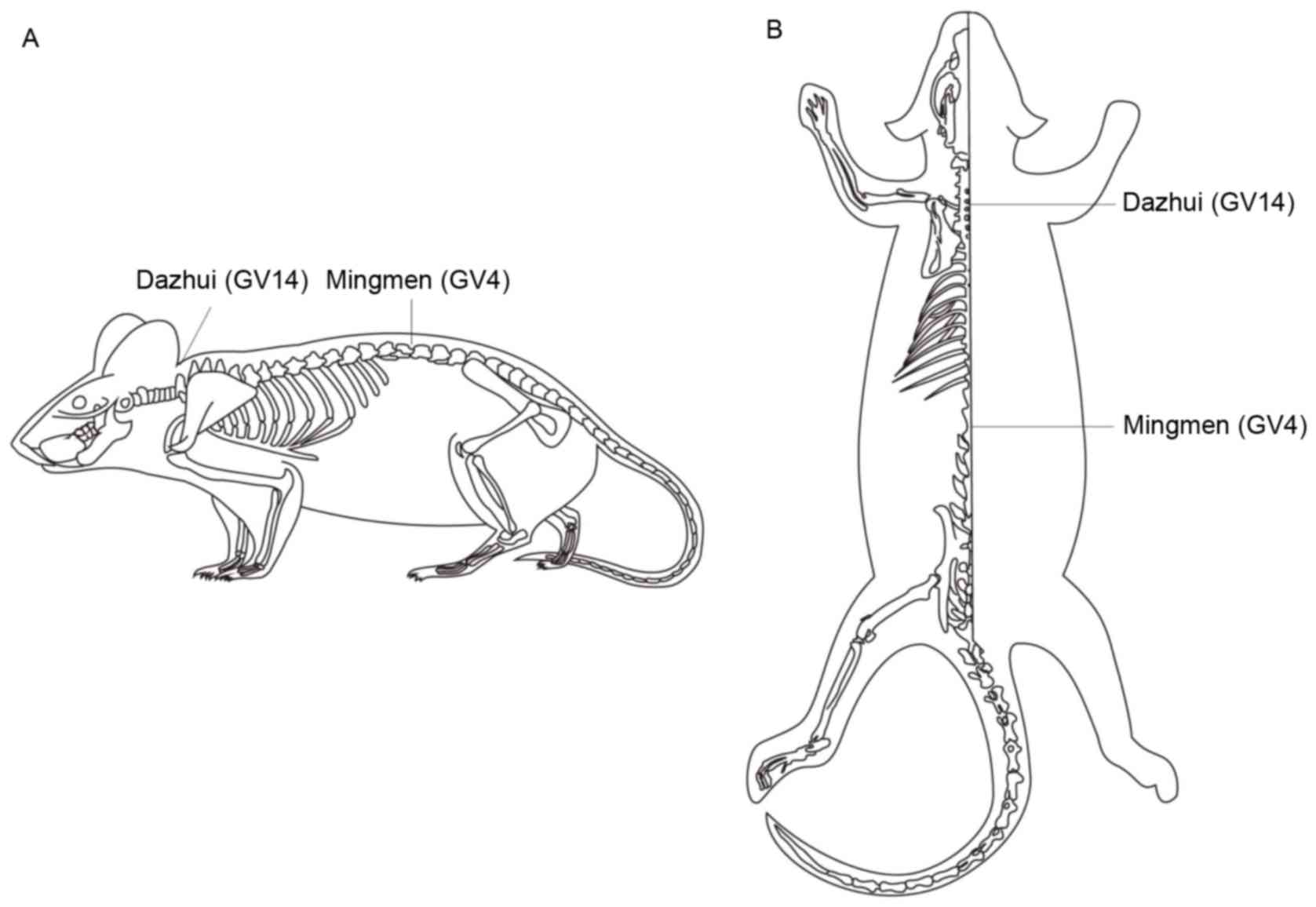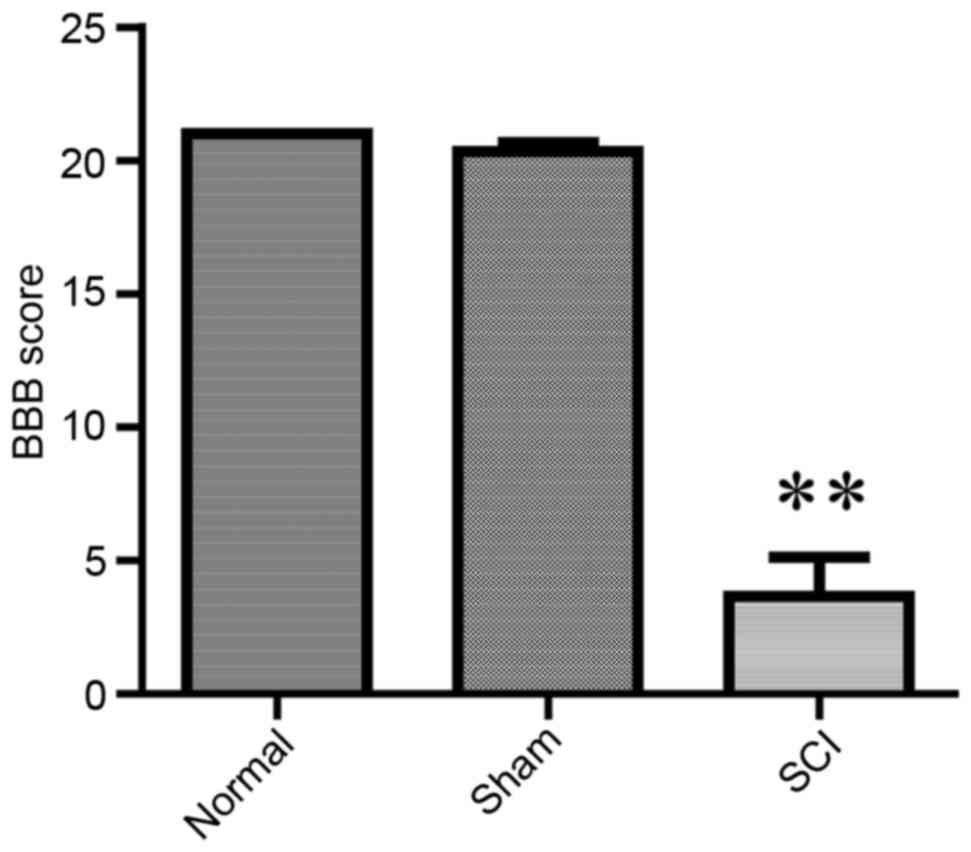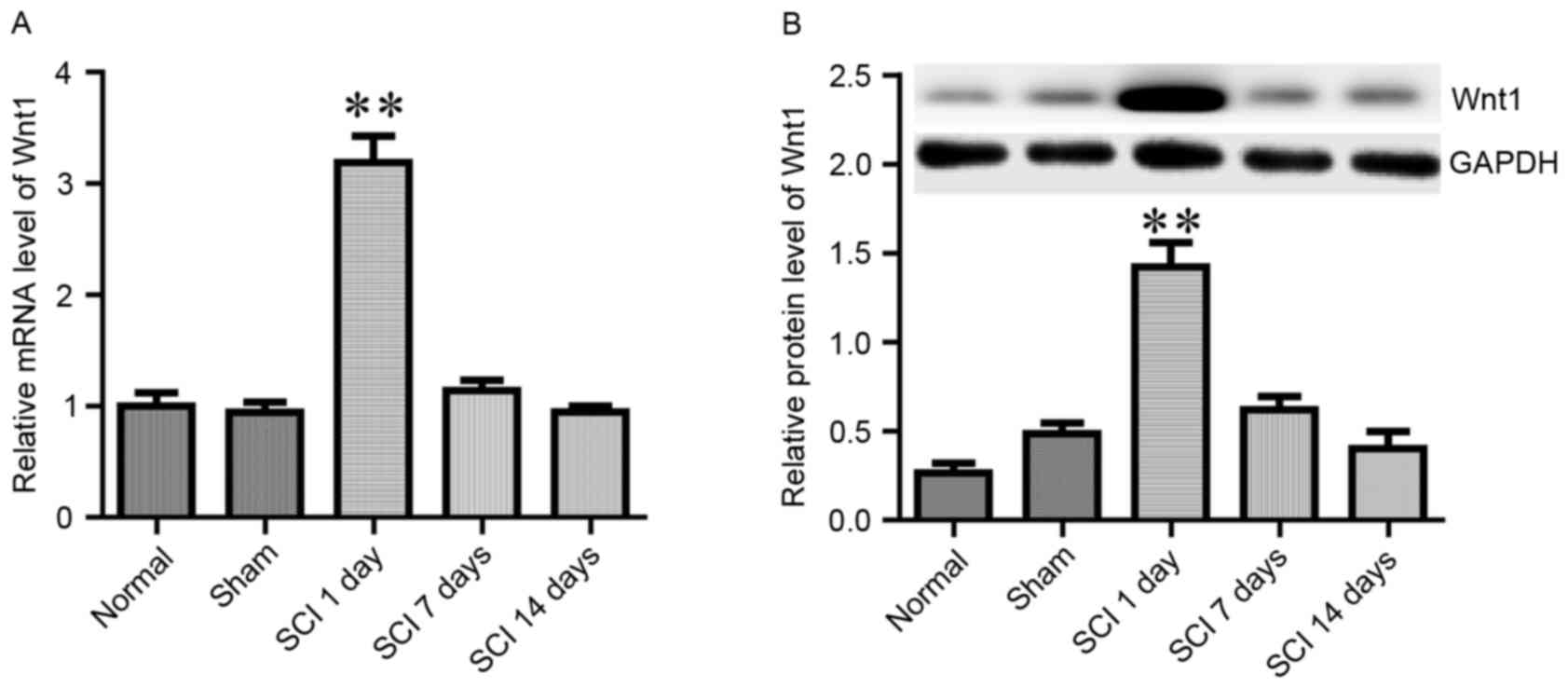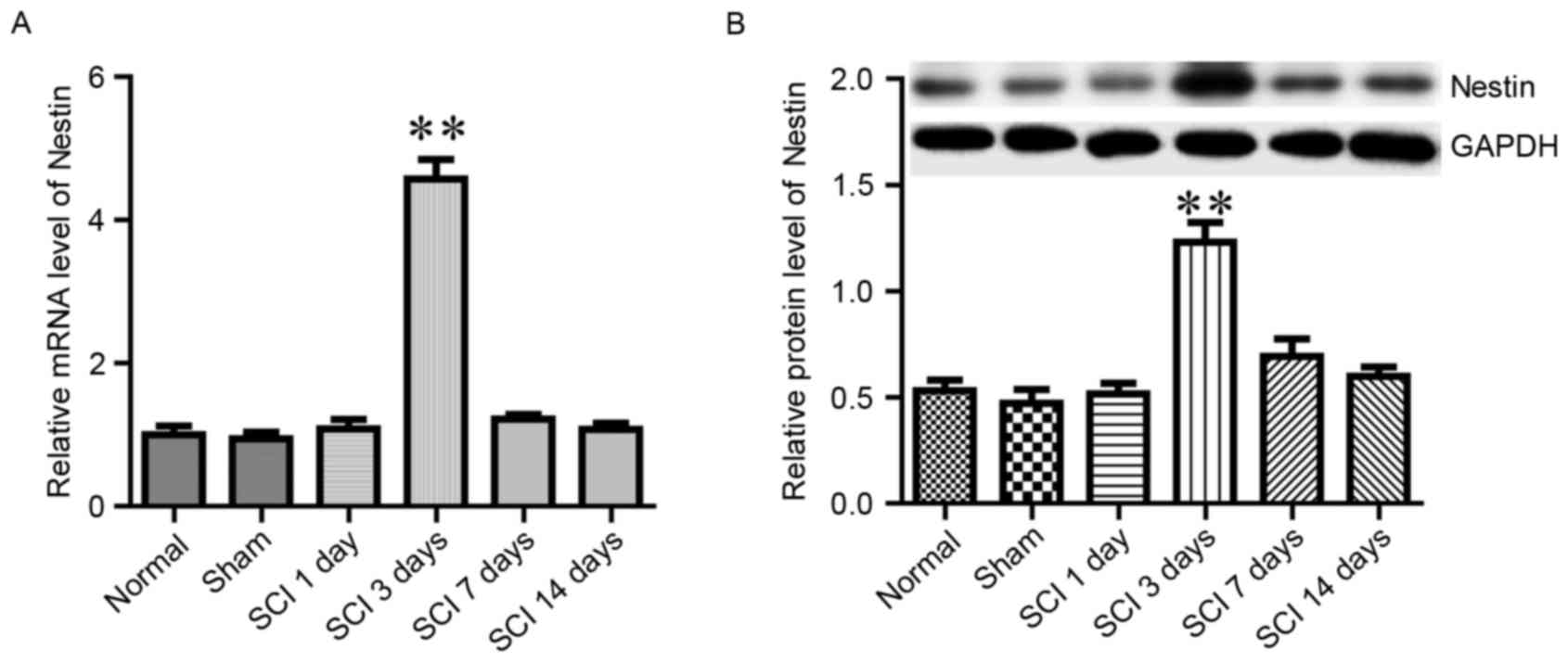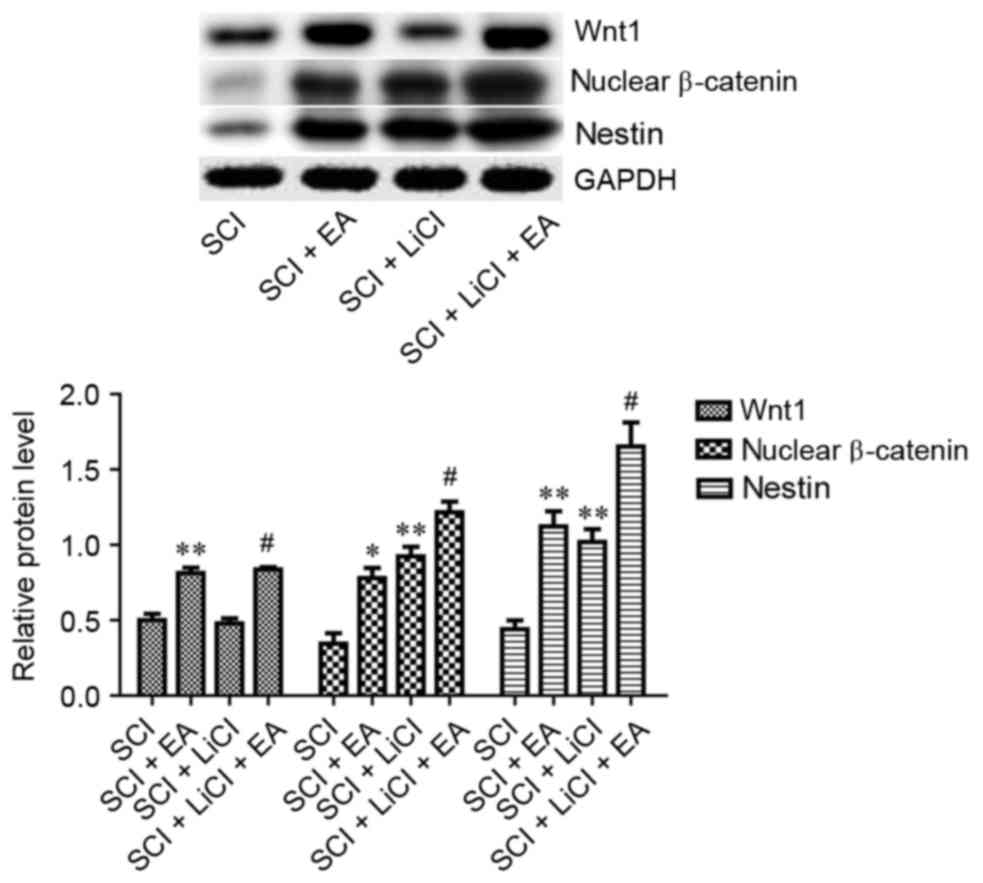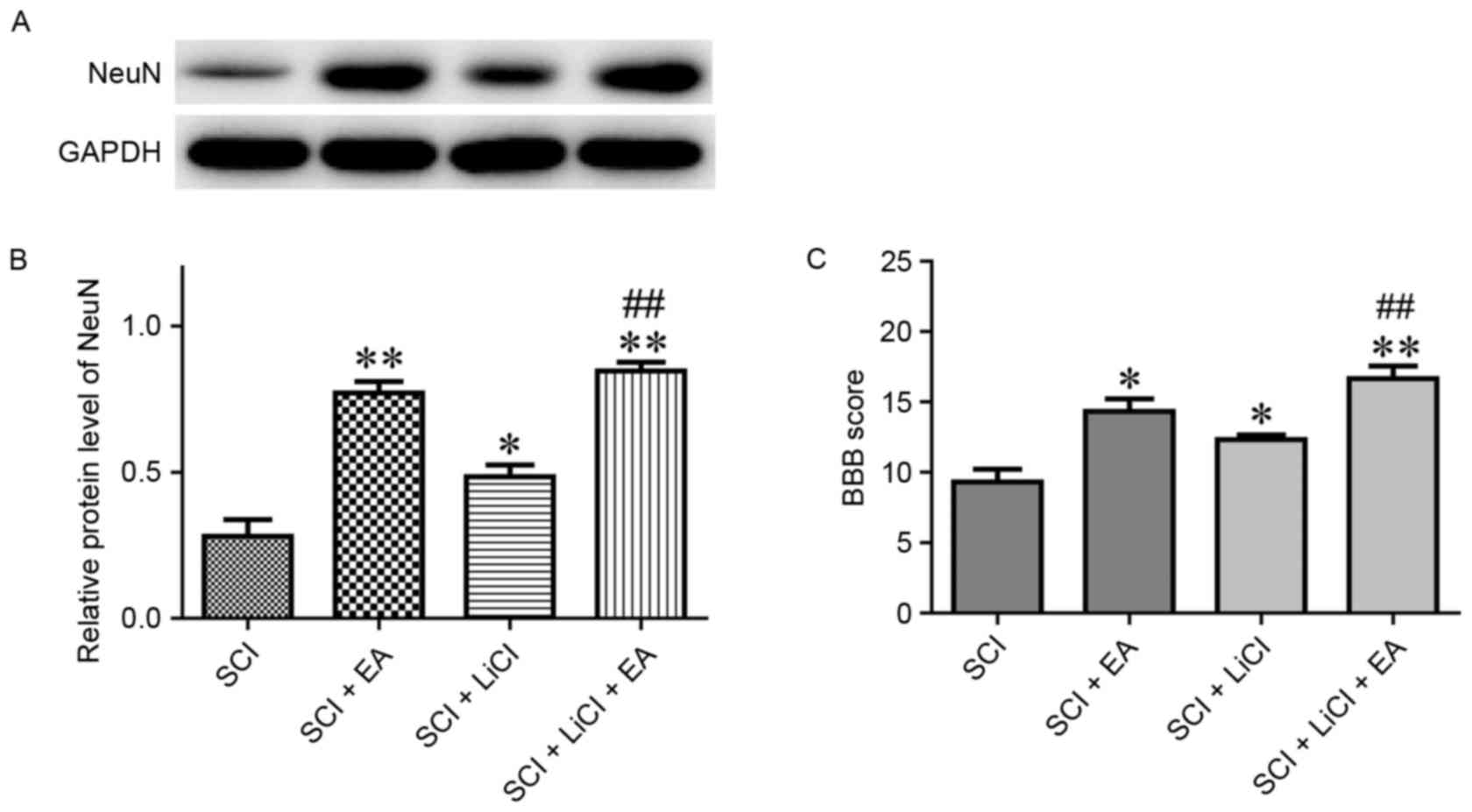|
1
|
McDonald JW and Sadowsky C: Spinal-cord
injury. Lancet. 359:417–425. 2002. View Article : Google Scholar : PubMed/NCBI
|
|
2
|
Tator CH: Update on the pathophysiology
and pathology of acute spinal cord injury. Brain Pathol. 5:407–413.
1995. View Article : Google Scholar : PubMed/NCBI
|
|
3
|
Sekhon LH and Fehlings MG: Epidemiology,
demographics, and pathophysiology of acute spinal cord injury.
Spine (Phila Pa 1976). 26 24 Suppl:S2–S12. 2001. View Article : Google Scholar : PubMed/NCBI
|
|
4
|
Crowe MJ, Bresnahan JC, Shuman SL, Masters
JN and Crowe MS: Apoptosis and delayed degeneration after spinal
cord injury in rats and monkeys. Nat Med. 3:73–76. 1997. View Article : Google Scholar : PubMed/NCBI
|
|
5
|
Lou J, Lenke LG, Ludwig FJ and O'Brien MF:
Apoptosis as a mechanism of neuronal cell death following acute
experimental spinal cord injury. Spinal Cord. 36:683–690. 1998.
View Article : Google Scholar : PubMed/NCBI
|
|
6
|
Osterholm JL and Mathews GJ: Altered
norepinephrine metabolism following experimental spinal cord
injury. 1. Relationship to hemorrhagic necrosis and post-wounding
neurological deficits. J Neurosurg. 36:386–394. 1972. View Article : Google Scholar : PubMed/NCBI
|
|
7
|
Donnelly DJ and Popovich PG: Inflammation
and its role in neuroprotection, axonal regeneration and functional
recovery after spinal cord injury. Exp Neurol. 209:378–388. 2008.
View Article : Google Scholar : PubMed/NCBI
|
|
8
|
Tysseling-Mattiace VM, Sahni V, Niece KL,
Birch D, Czeisler C, Fehlings MG, Stupp SI and Kessler JA:
Self-assembling nanofibers inhibit glial scar formation and promote
axon elongation after spinal cord injury. J Neurosci. 28:3814–3823.
2008. View Article : Google Scholar : PubMed/NCBI
|
|
9
|
Gajos-Michniewicz A and Czyz M: Modulation
of WNT/β-catenin pathway in melanoma by biologically active
components derived from plants. Fitoterapia. 109:283–292. 2016.
View Article : Google Scholar : PubMed/NCBI
|
|
10
|
Liu YB, Wang XF, Lu CC, Sherman R, Steward
O, Xu XM and Zou Y: Repulsive Wnt signaling inhibits axon
regeneration after CNS injury. J Neurosci. 28:8376–8382. 2008.
View Article : Google Scholar : PubMed/NCBI
|
|
11
|
Zechner D, Fujita Y, Hülsken J, Müller T,
Walther I, Taketo MM, Crenshaw EB III, Birchmeier W and Birchmeier
C: beta-Catenin signals regulate cell growth and the balance
between progenitor cell expansion and differentiation in the
nervous system. Dev Biol. 258:406–418. 2003. View Article : Google Scholar : PubMed/NCBI
|
|
12
|
Lavezzi AM, Corna MF and Matturri L:
Neuronal nuclear antigen (NeuN): A useful marker of neuronal
immaturity in sudden unexplained perinatal death. J Neurol Sci.
329:45–50. 2013. View Article : Google Scholar : PubMed/NCBI
|
|
13
|
Obermair FJ, Schröter A and Thallmair M:
Endogenous neural progenitor cells as therapeutic target after
spinal cord injury. Physiology (Bethesda). 23:296–304. 2008.
View Article : Google Scholar : PubMed/NCBI
|
|
14
|
Okano H, Ogawa Y, Nakamura M, Kaneko S,
Iwanami A and Toyama Y: Transplantation of neural stem cells into
the spinal cord after injury. Semin Cell Dev Biol. 14:191–198.
2003. View Article : Google Scholar : PubMed/NCBI
|
|
15
|
Yan Q, Ruan JW, Ding Y, Li WJ, Li Y and
Zeng YS: Electro-acupuncture promotes differentiation of
mesenchymal stem cells, regeneration of nerve fibers and partial
functional recovery after spinal cord injury. Exp Toxicol Pathol.
63:151–156. 2011. View Article : Google Scholar : PubMed/NCBI
|
|
16
|
Jiang SH, Tu WZ, Zou EM, Hu J, Wang S, Li
JR, Wang WS, He R, Cheng RD and Liao WJ: Neuroprotective effects of
different modalities of acupuncture on traumatic spinal cord injury
in rats. Evid Based Complement Alternat Med. 2014:4315802014.
View Article : Google Scholar : PubMed/NCBI
|
|
17
|
Chen YY, Zhang W, Chen YL, Chen SJ, Dong H
and Zeng YS: Electro-acupuncture improves survival and migration of
transplanted neural stem cells in injured spinal cord in rats.
Acupunct Electrother Res. 33:19–31. 2008. View Article : Google Scholar : PubMed/NCBI
|
|
18
|
Choi DC, Lee JY, Moon YJ, Kim SW, Oh TH
and Yune TY: Acupuncture-mediated inhibition of inflammation
facilitates significant functional recovery after spinal cord
injury. Neurobiol Dis. 39:272–282. 2010. View Article : Google Scholar : PubMed/NCBI
|
|
19
|
Faden AI and Simon RP: A potential role
for excitotoxins in the pathophysiology of spinal cord injury. Ann
Neurol. 23:623–626. 1988. View Article : Google Scholar : PubMed/NCBI
|
|
20
|
Livak KJ and Schmittgen TD: Analysis of
relative gene expression data using real-time quantitative PCR and
the 2(−Delta Delta C(T)) method. Method. 25:402–408. 2001.
View Article : Google Scholar
|
|
21
|
Basso DM, Beattie MS and Bresnahan JC: A
sensitive and reliable locomotor rating scale for open field
testing in rats. J Neurotrauma. 12:1–21. 1995. View Article : Google Scholar : PubMed/NCBI
|
|
22
|
Lee SM, Yune TY, Kim SJ, Park DW, Lee YK,
Kim YC, Oh YJ, Markelonis GJ and Oh TH: Minocycline reduces cell
death and improves functional recovery after traumatic spinal cord
injury in the rat. J Neurotrauma. 20:1017–1027. 2003. View Article : Google Scholar : PubMed/NCBI
|
|
23
|
Liu Y, Wang X, Lu CC, Kerman R, Steward O,
Xu XM and Zou Y: Repulsive Wnt signaling inhibits axon regeneration
after CNS injury. J Neurosci. 28:8376–8382. 2008. View Article : Google Scholar : PubMed/NCBI
|
|
24
|
Park D, Xiang AP, Mao FF, Zhang L, Di CG,
Liu XM, Shao Y, Ma BF, Lee JH, Ha KS, et al: Nestin is required for
the proper self-renewal of neural stem cells. Stem Cells.
28:2162–2171. 2010. View
Article : Google Scholar : PubMed/NCBI
|
|
25
|
Mullen RJ, Buck CR and Smith AM: NeuN, a
neuronal specific nuclear protein in vertebrates. Development.
116:201–211. 1992.PubMed/NCBI
|
|
26
|
Dravid G, Ye Z, Hammond H, Chen G, Pyle A,
Donovan P, Yu X and Cheng L: Defining the role of Wnt/beta-catenin
signaling in the survival, proliferation, and self-renewal of human
embryonic stem cells. Stem Cells. 23:1489–1501. 2005. View Article : Google Scholar : PubMed/NCBI
|
|
27
|
Hirabayashi Y, Itoh Y, Tabata H, Nakajima
K, Akiyama T, Masuyama N and Gotoh Y: The Wnt/beta-catenin pathway
directs neuronal differentiation of cortical neural precursor
cells. Development. 131:2791–2801. 2004. View Article : Google Scholar : PubMed/NCBI
|
|
28
|
Day TF, Guo X, Garrett-Beal L and Yang Y:
Wnt/beta-catenin signaling in mesenchymal progenitors controls
osteoblast and chondrocyte differentiation during vertebrate
skeletogenesis. Dev Cell. 8:739–750. 2005. View Article : Google Scholar : PubMed/NCBI
|
|
29
|
Aman A and Piotrowski T: Wnt/beta-catenin
and Fgf signaling control collective cell migration by restricting
chemokine receptor expression. Dev Cell. 15:749–761. 2008.
View Article : Google Scholar : PubMed/NCBI
|
|
30
|
Chen S, Guttridge DC, You Z, Zhang Z,
Fribley A, Mayo MW, Kitajewski J and Wang C: Wnt-1 signaling
inhibits apoptosis by activating beta-catenin/T cell
factor-mediated transcription. J Cell Biol. 152:87–96. 2001.
View Article : Google Scholar : PubMed/NCBI
|
|
31
|
Almeida M, Han L, Bellido T, Manolagas SC
and Kousteni S: Wnt proteins prevent apoptosis of both uncommitted
osteoblast progenitors and differentiated osteoblasts by
beta-catenin-dependent and-independent signaling cascades involving
Src/ERK and phosphatidylinositol 3-kinase/AKT. J Biol Chem.
280:41342–41351. 2005. View Article : Google Scholar : PubMed/NCBI
|
|
32
|
Wang F, Huang Q, Lan Q and Li ST:
Expression of Wnt-1 gene in the course of th human embrynoic neural
stem cells differentiating into neurons. Chinese Journal of
Neurosurgery. 20:409–412. 2005.
|
|
33
|
Davidson KC, Adams AM, Goodson JM,
McDonald CE, Potter JC, Berndt JD, Biechele TL, Taylor RJ and Moon
RT: Wnt/β-catenin signaling promotes differentiation, not
self-renewal, of human embryonic stem cells and is repressed by
Oct4. Proc Natl Acad Sci USA. 109:4485–4490. 2012. View Article : Google Scholar : PubMed/NCBI
|
|
34
|
Clevers H: Wnt/beta-catenin signaling in
development and disease. Cell. 127:469–480. 2006. View Article : Google Scholar : PubMed/NCBI
|
|
35
|
Wolf HK, Buslei R, Schmidt-Kastner R,
Schmidt-Kastner PK, Pietsch T, Wiestler OD and Blümcke I: NeuN: A
useful neuronal marker for diagnostic histopathology. J Histochem
Cytochem. 44:1167–1171. 1996. View Article : Google Scholar : PubMed/NCBI
|



